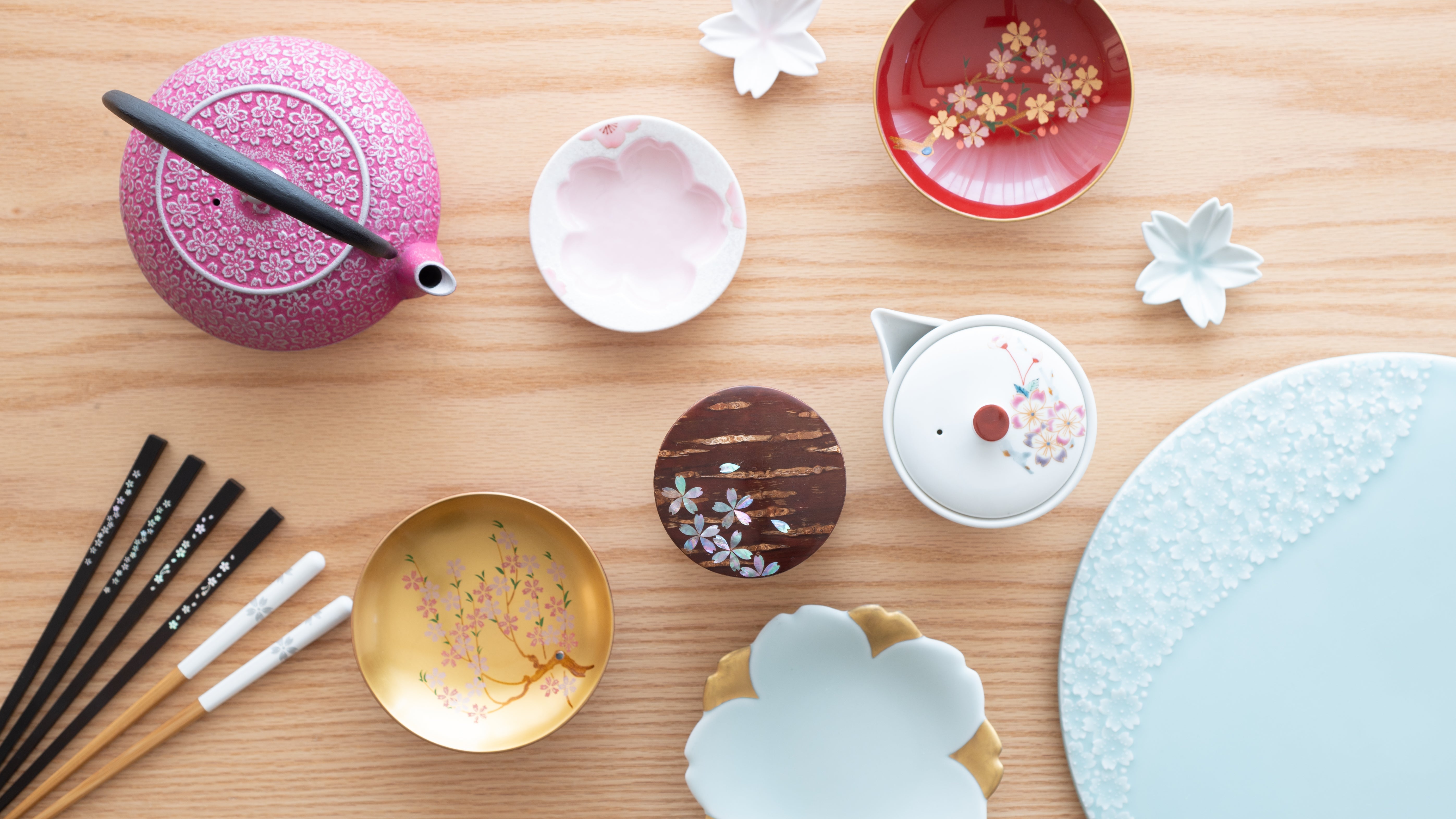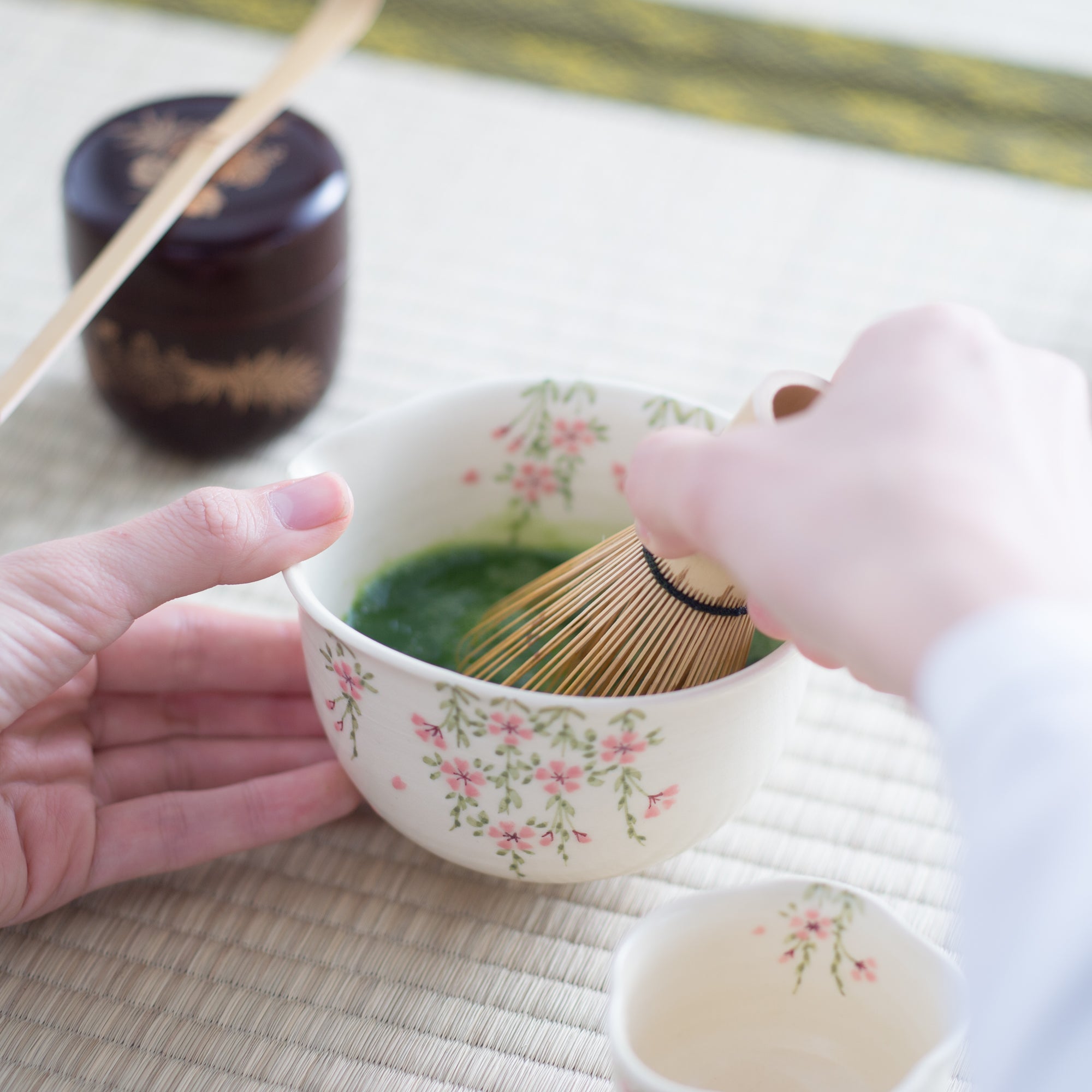
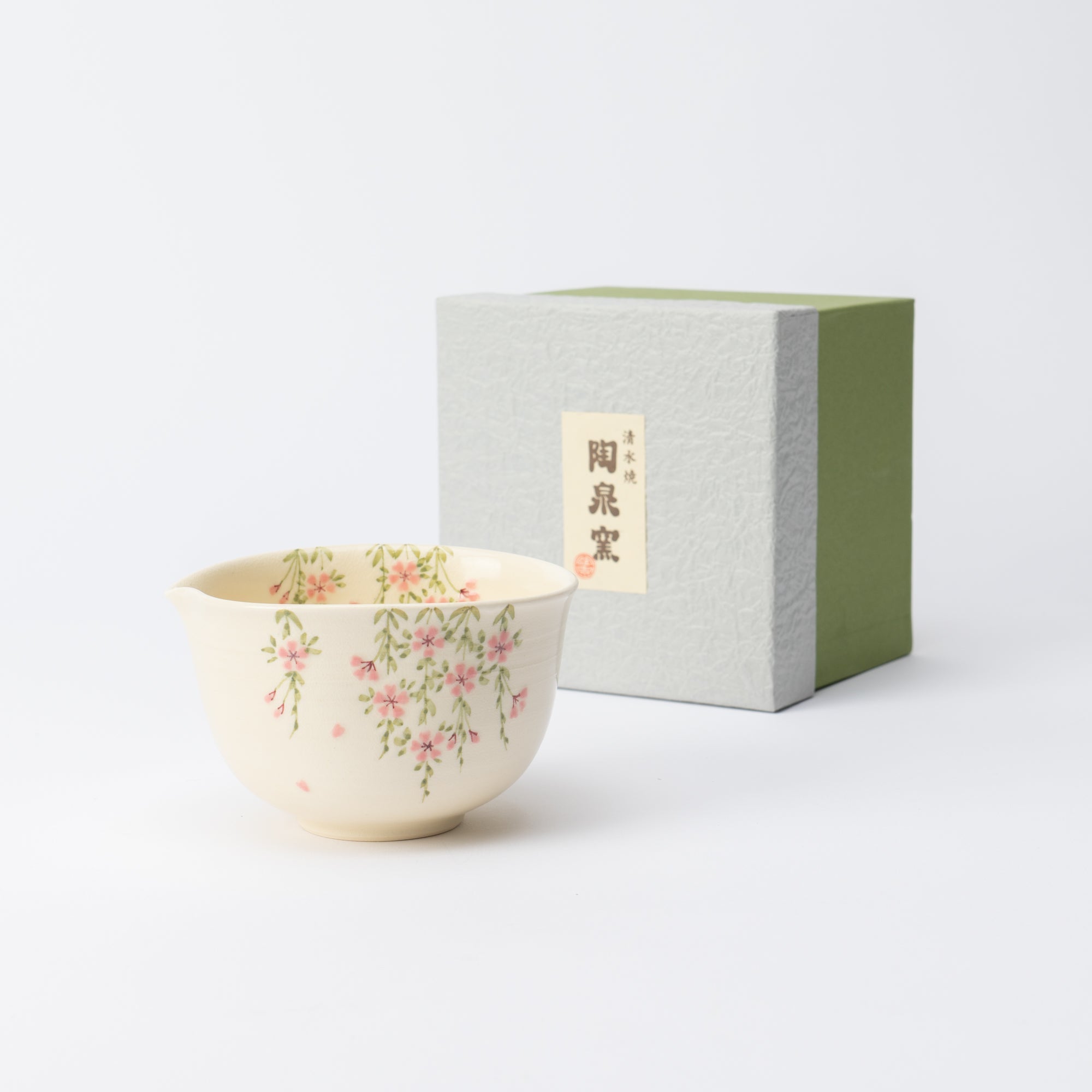
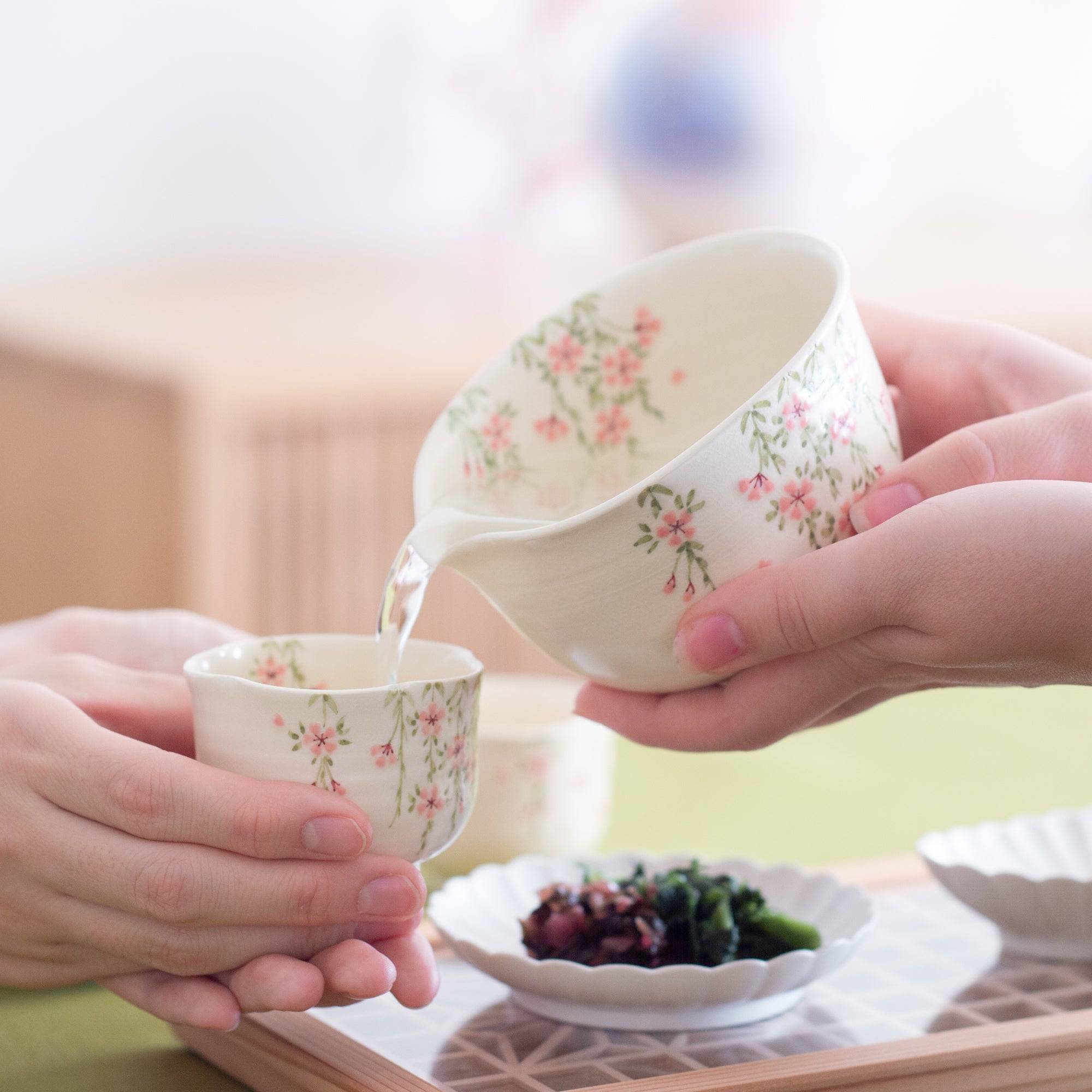
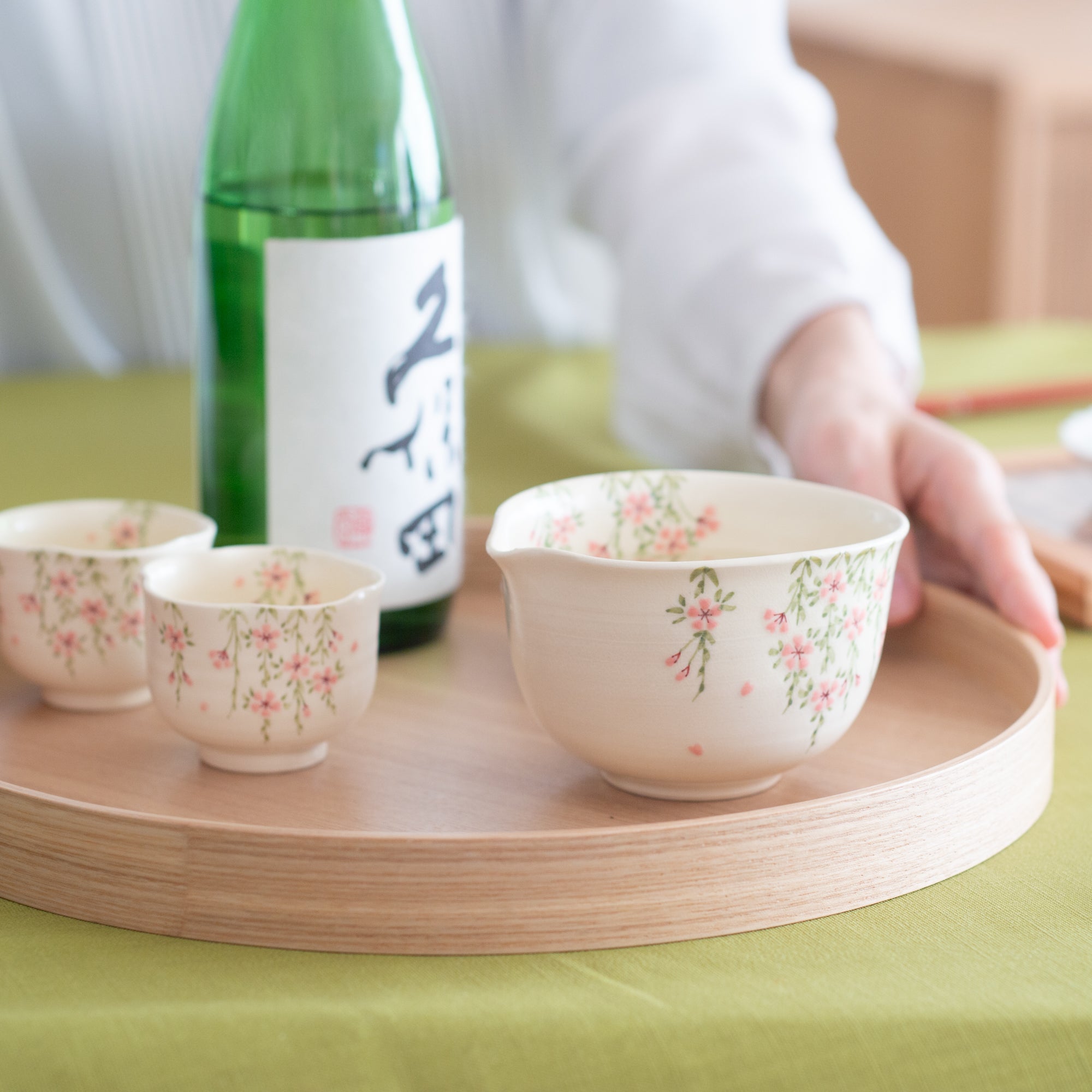
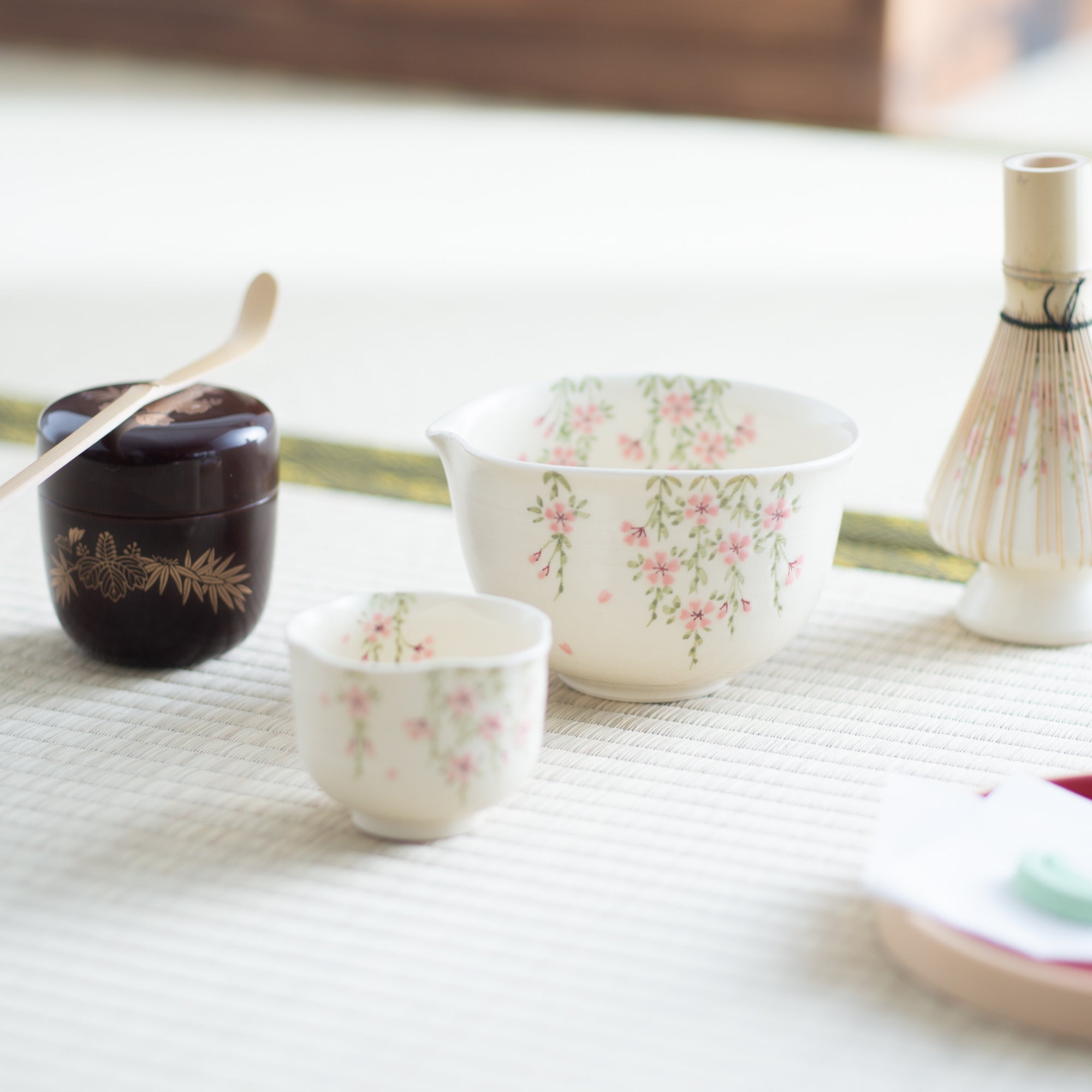
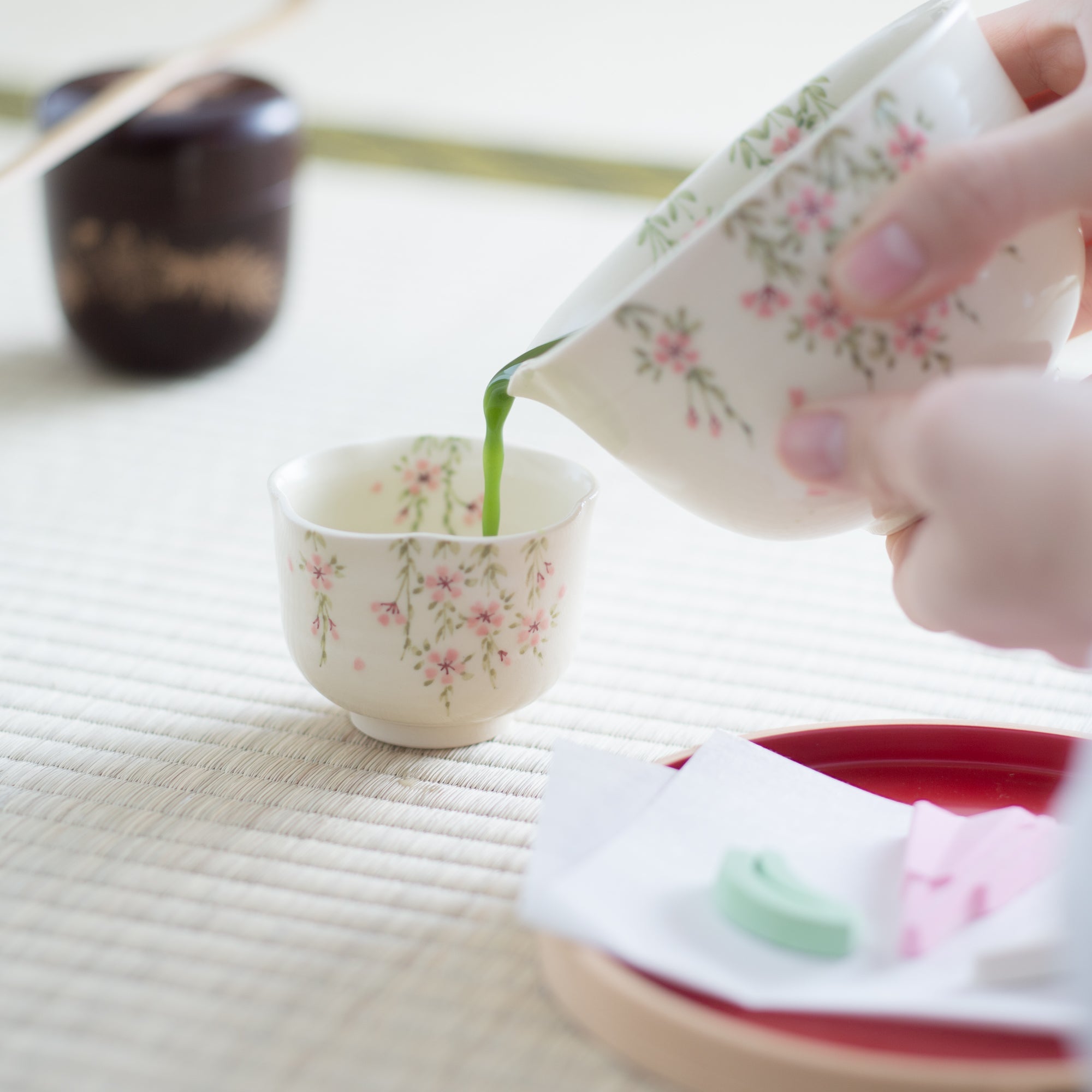
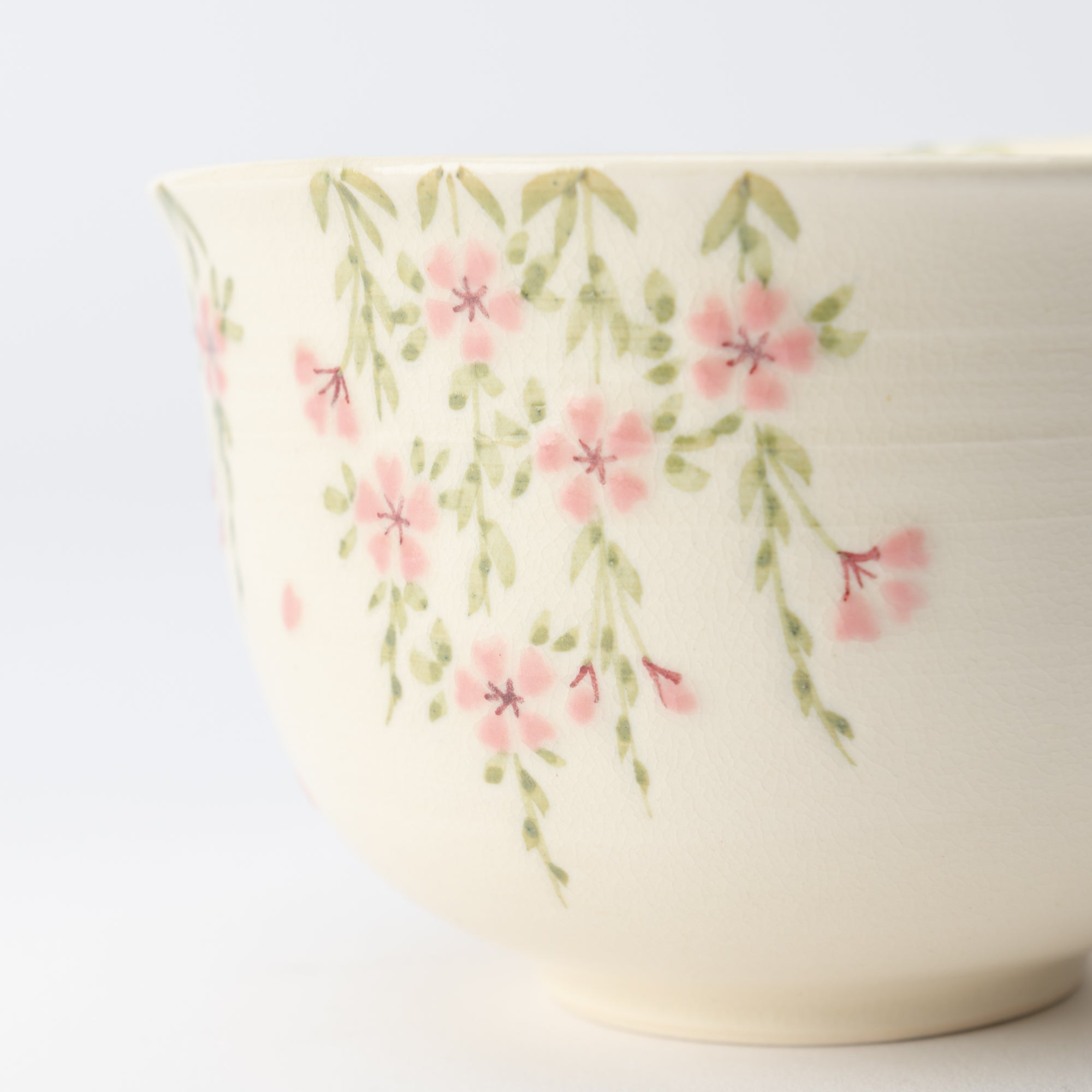
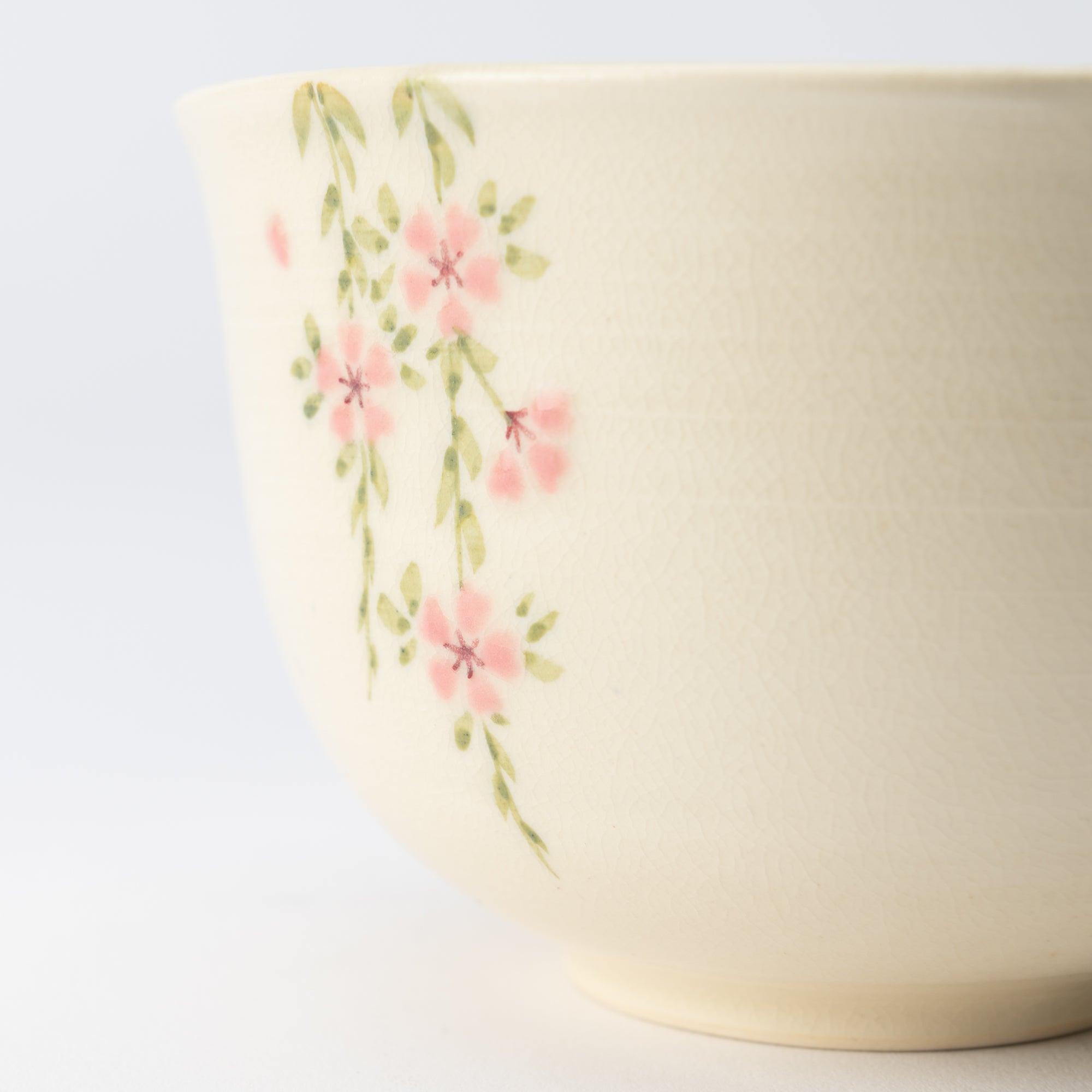
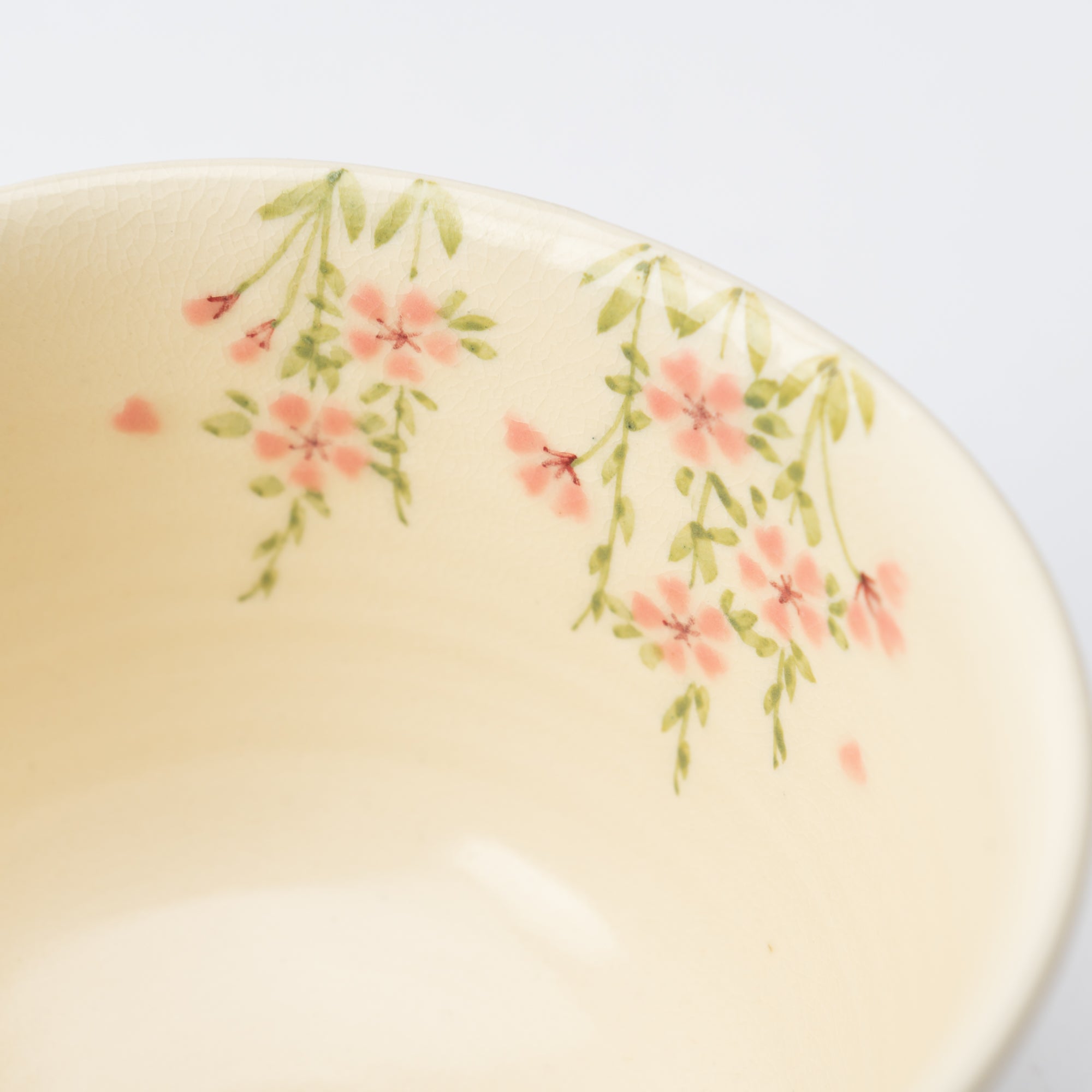
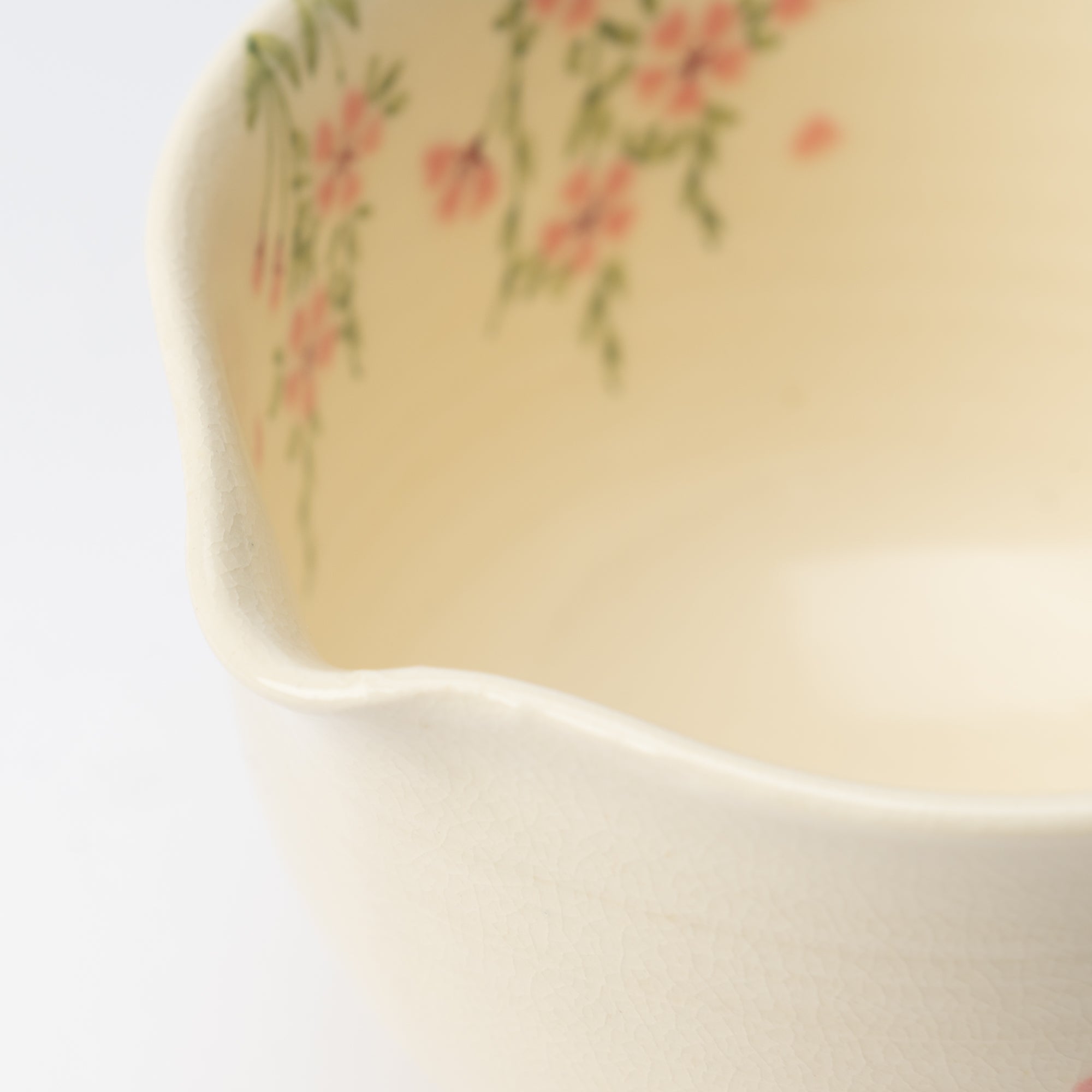
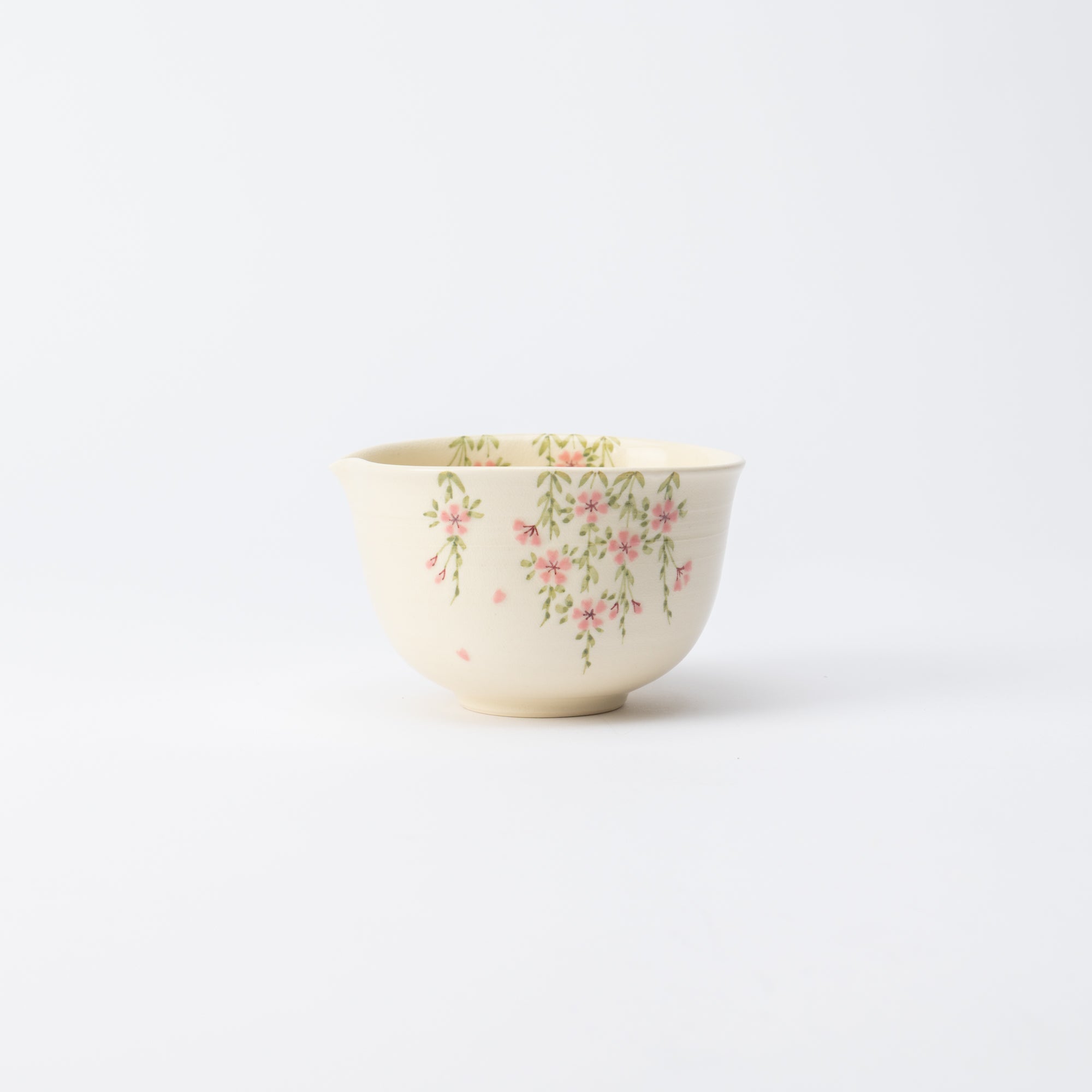
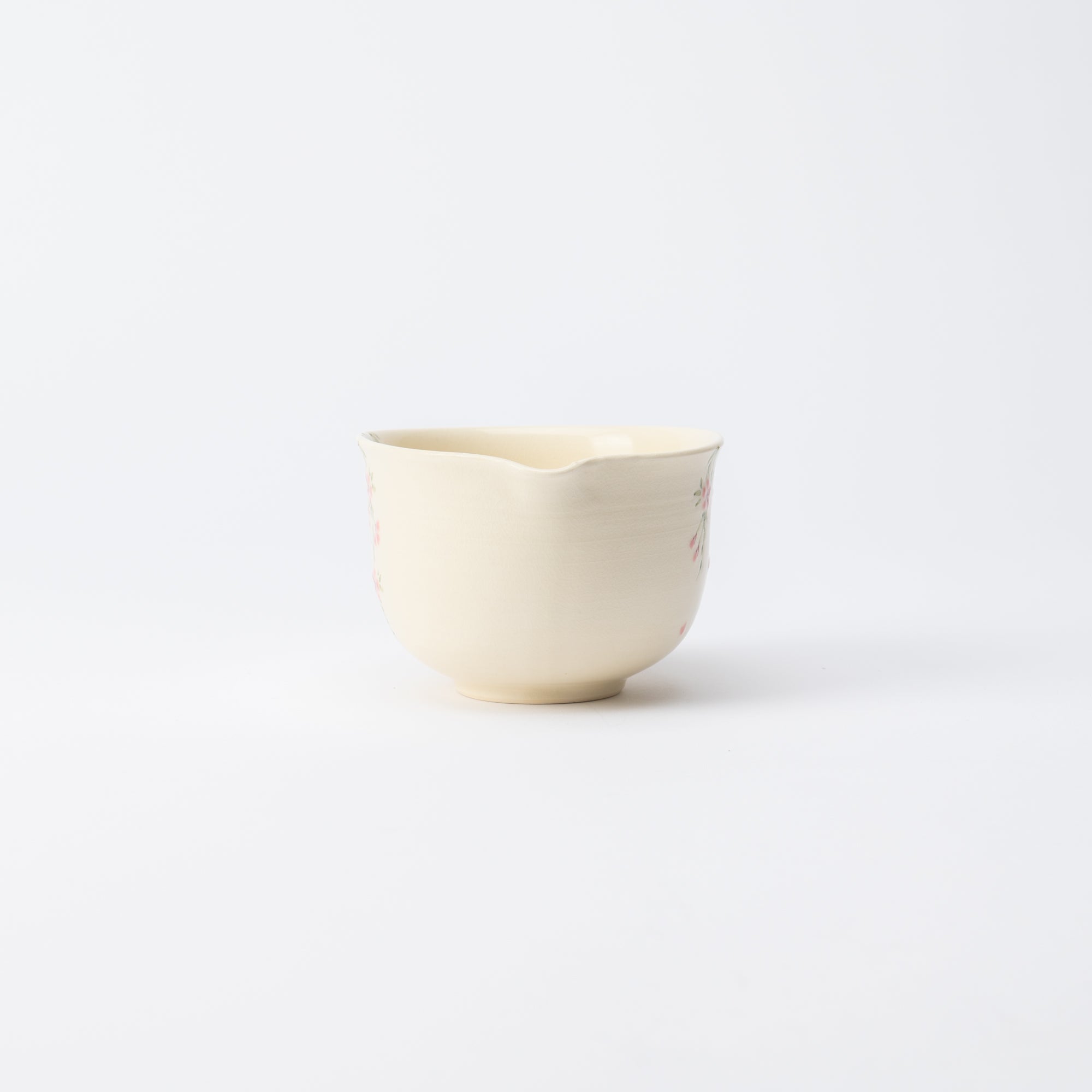
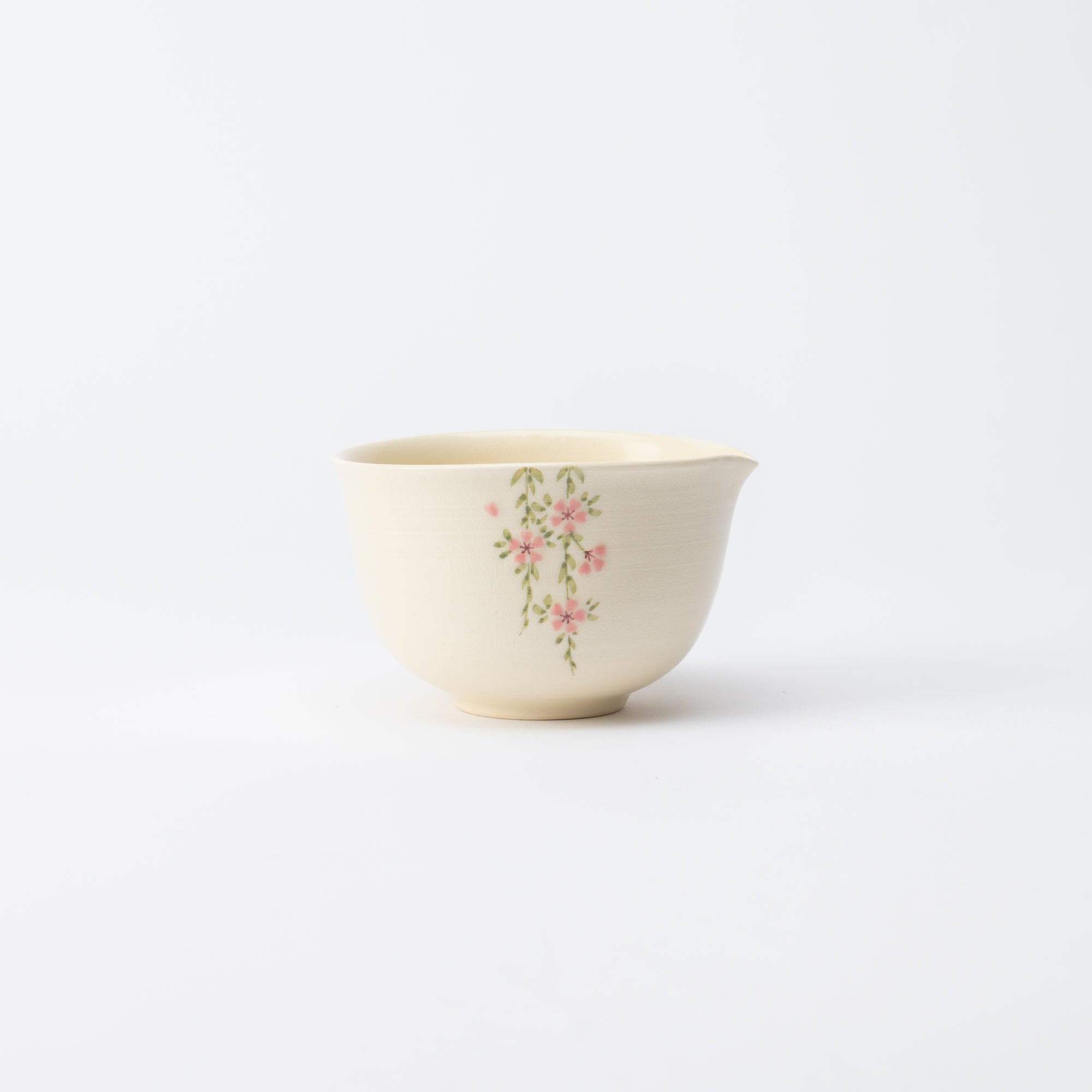
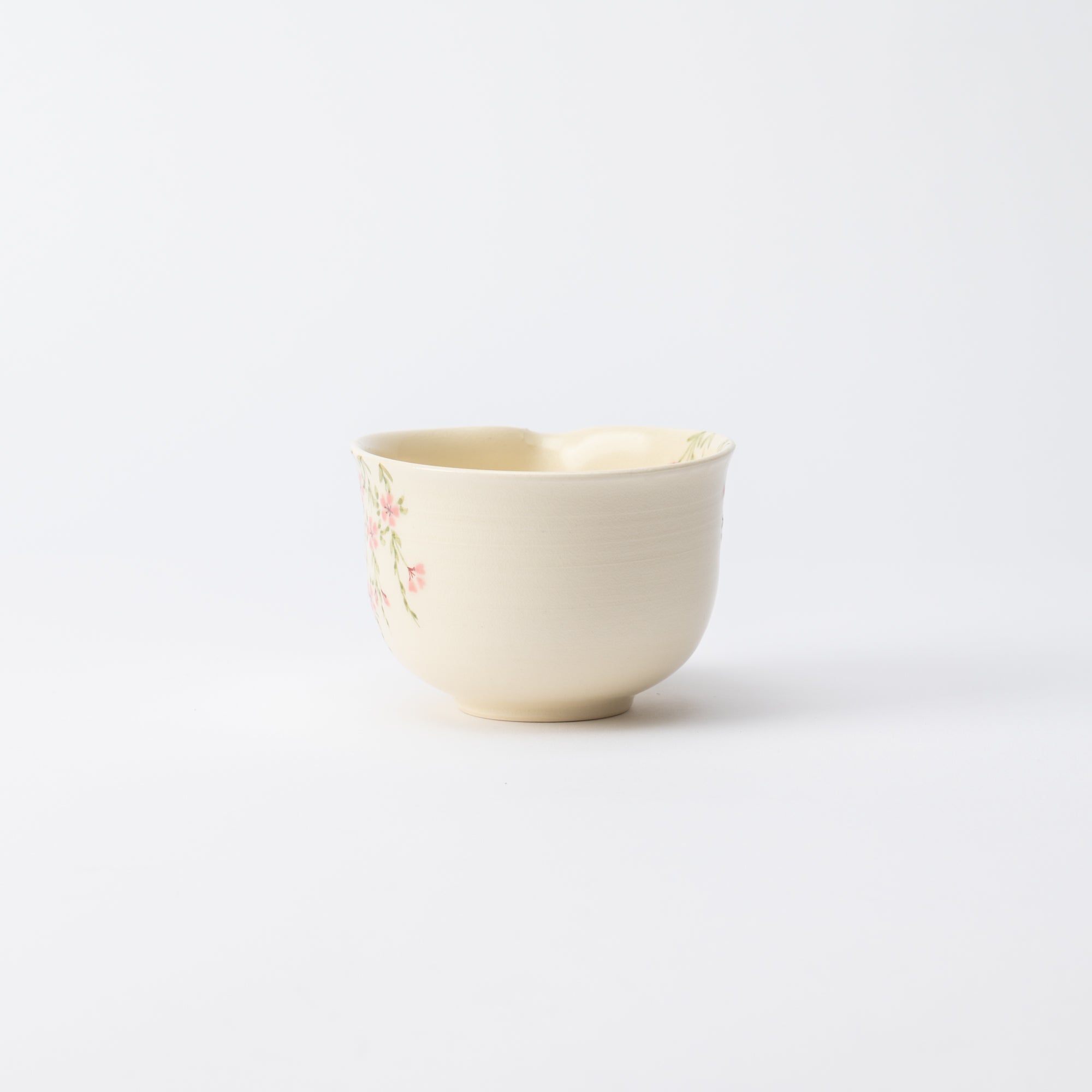
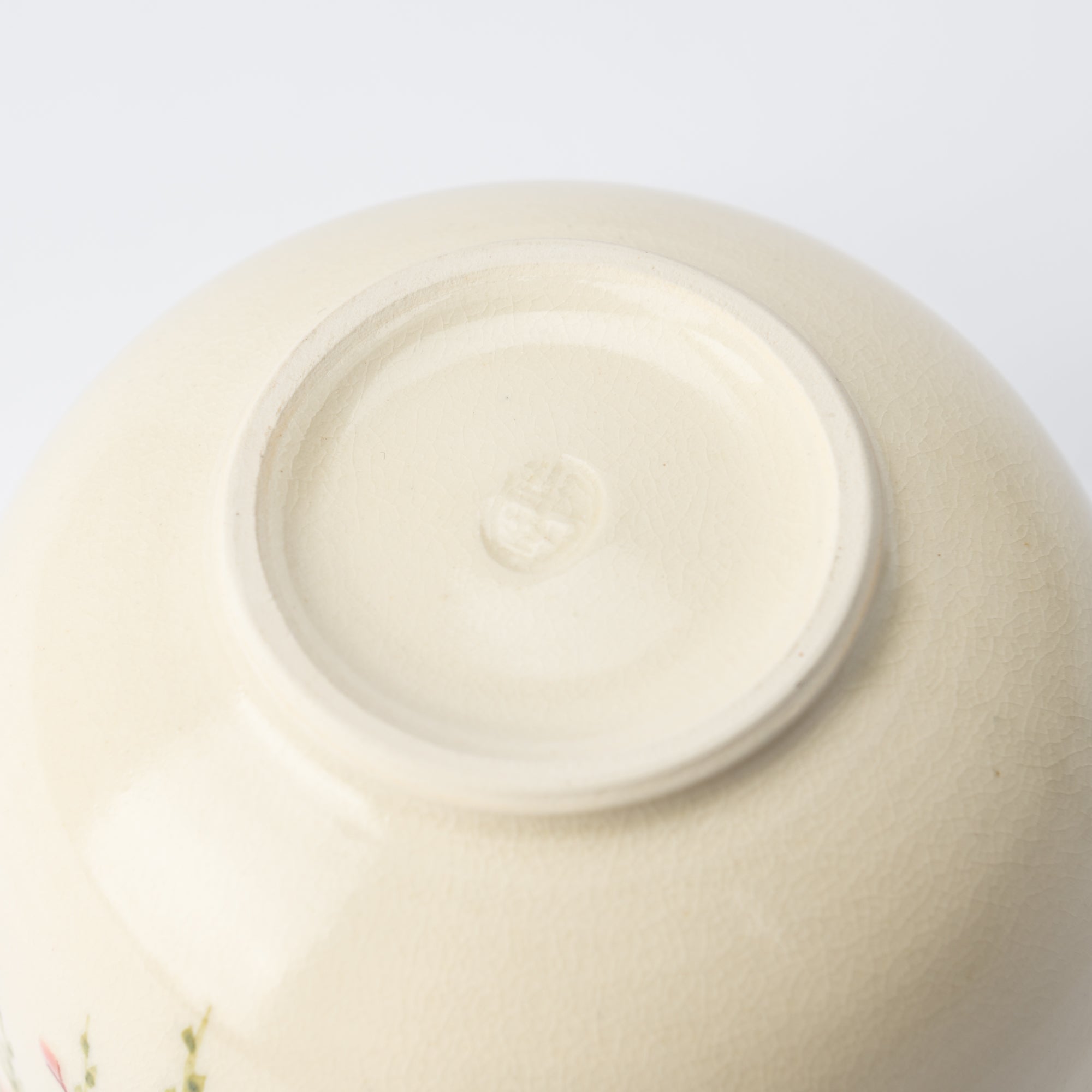
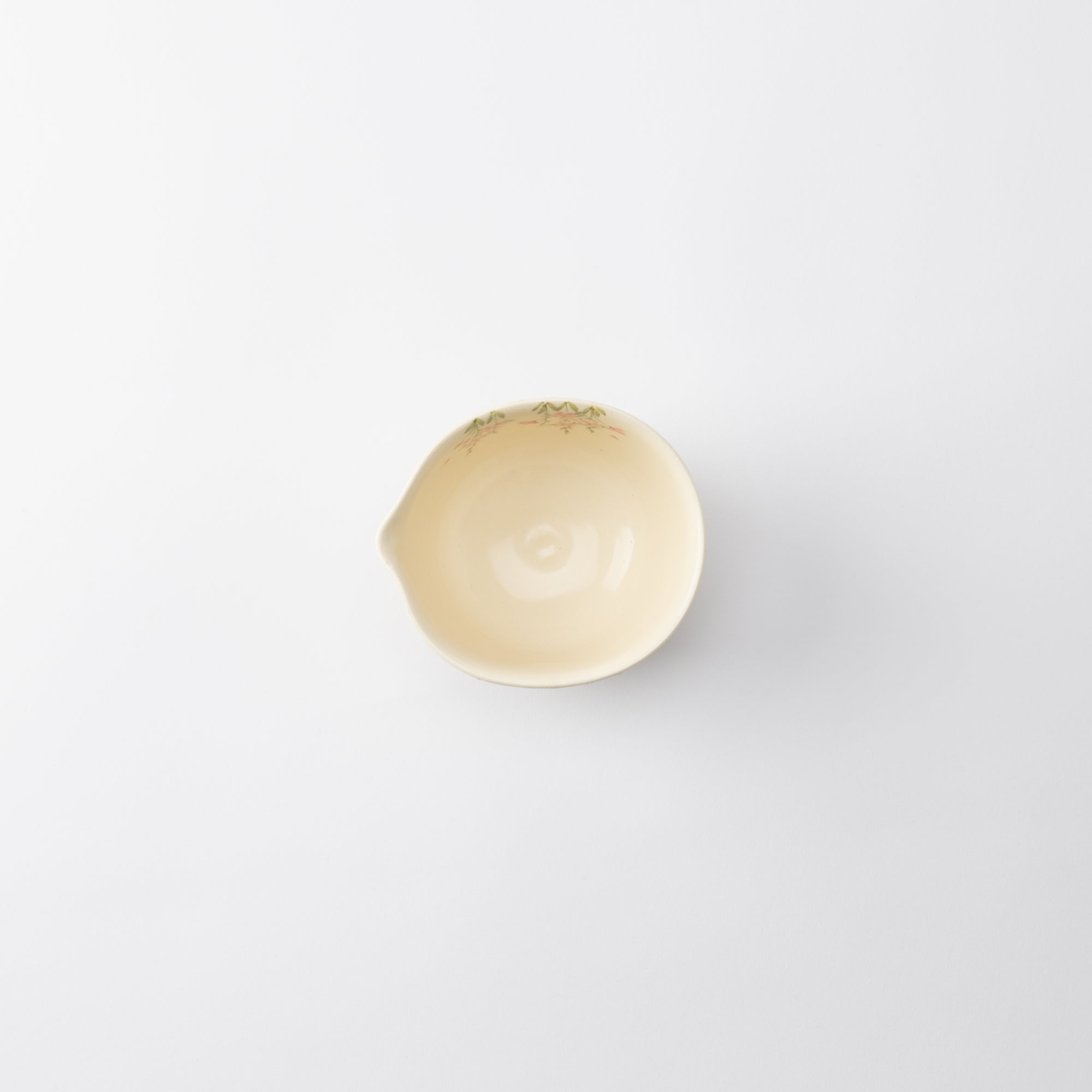
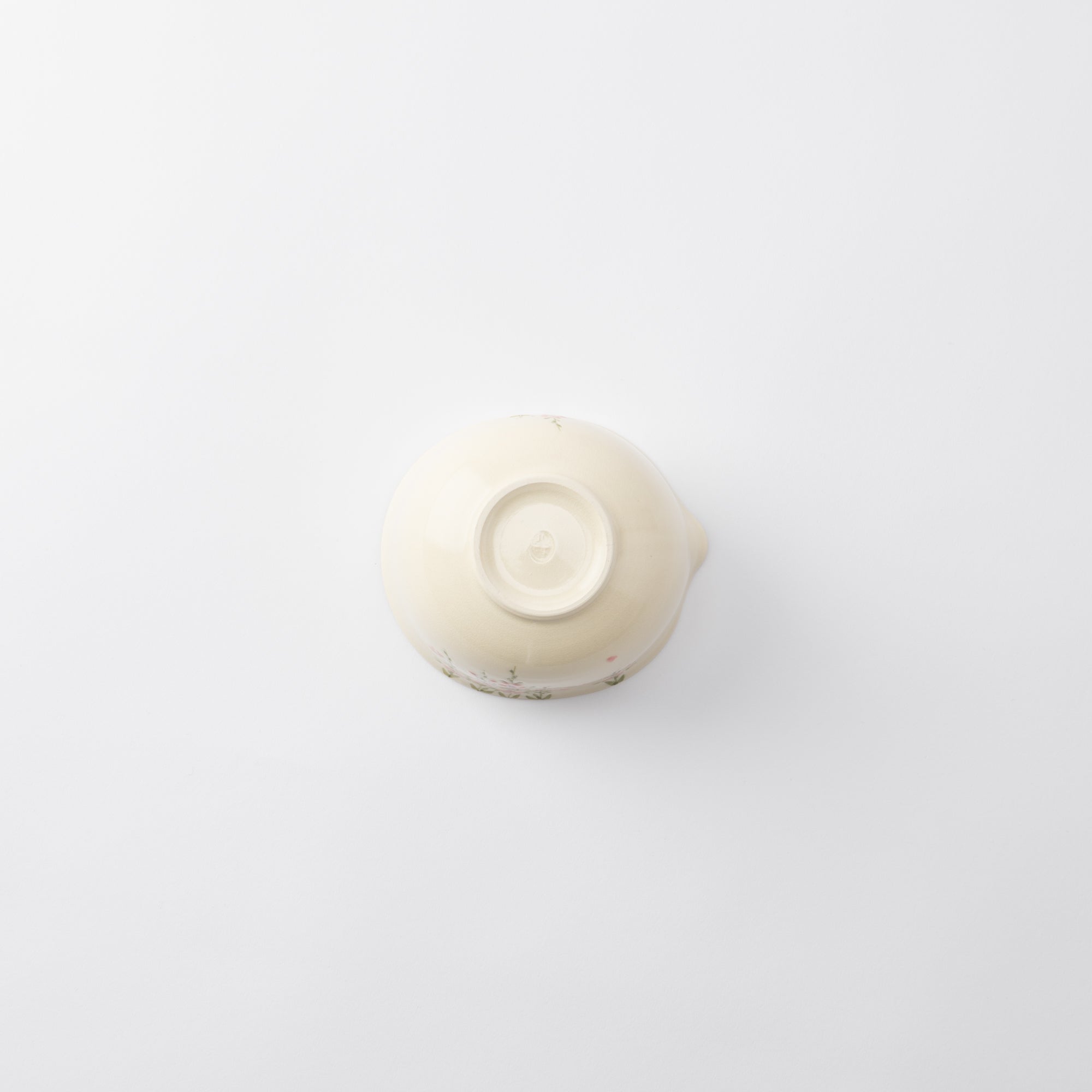
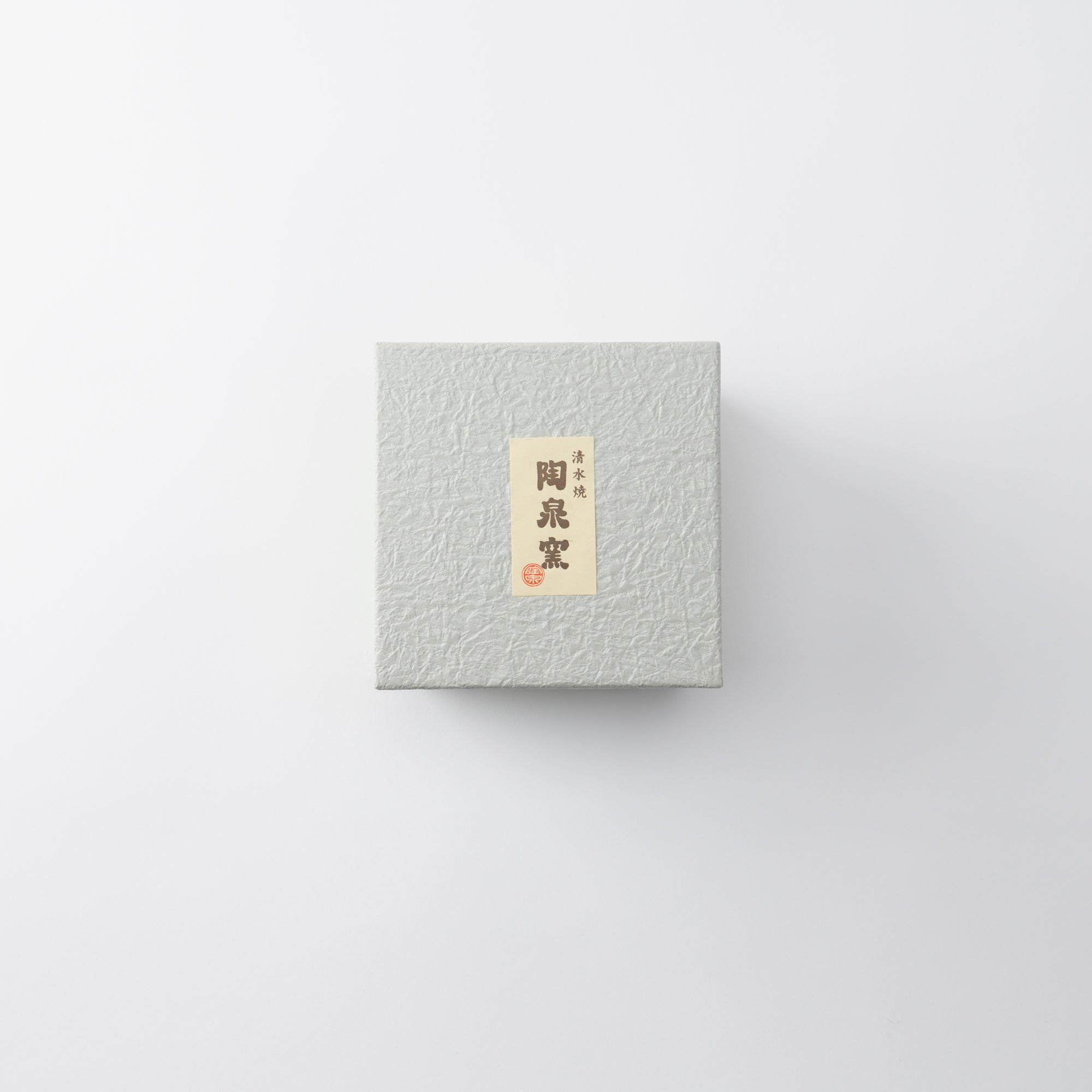
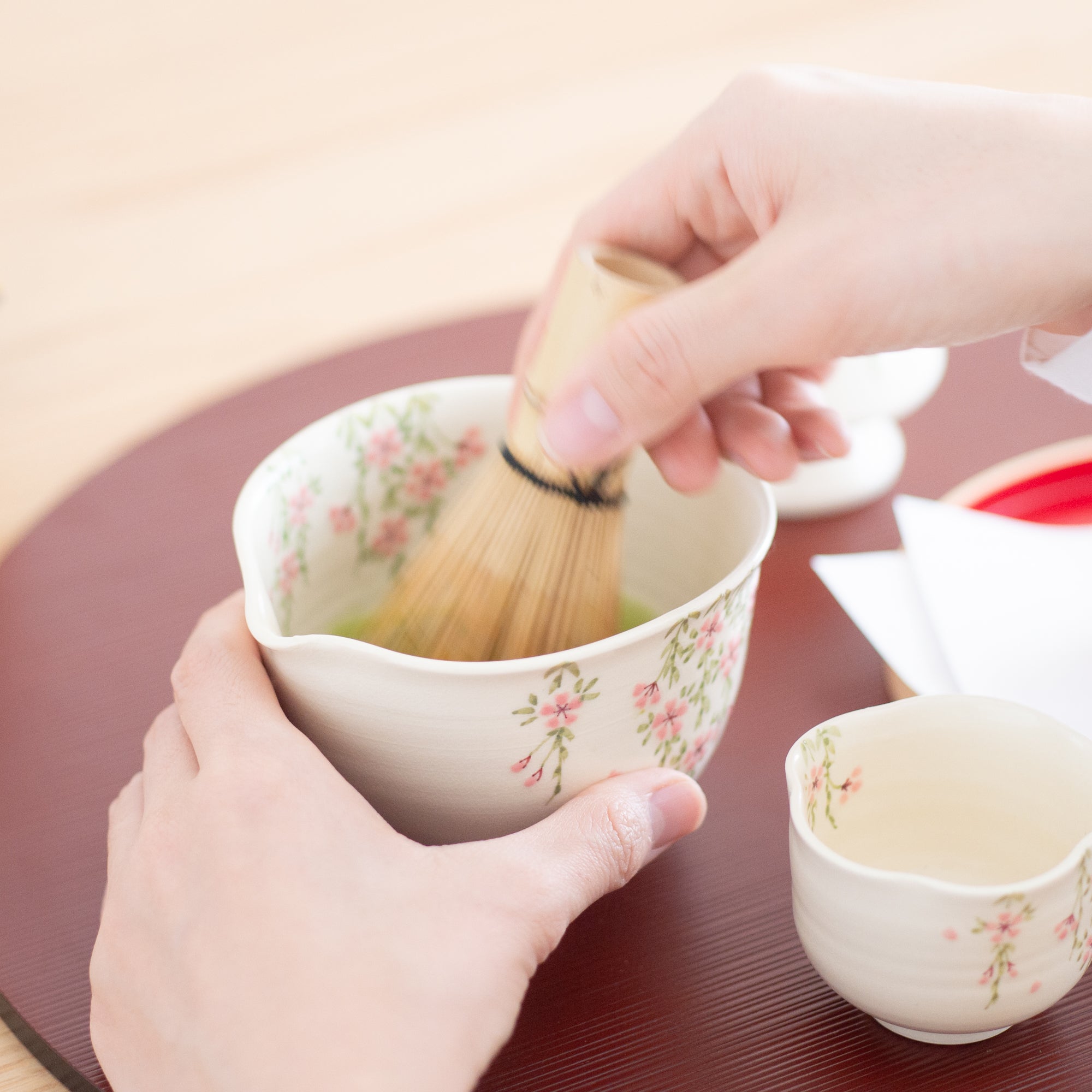
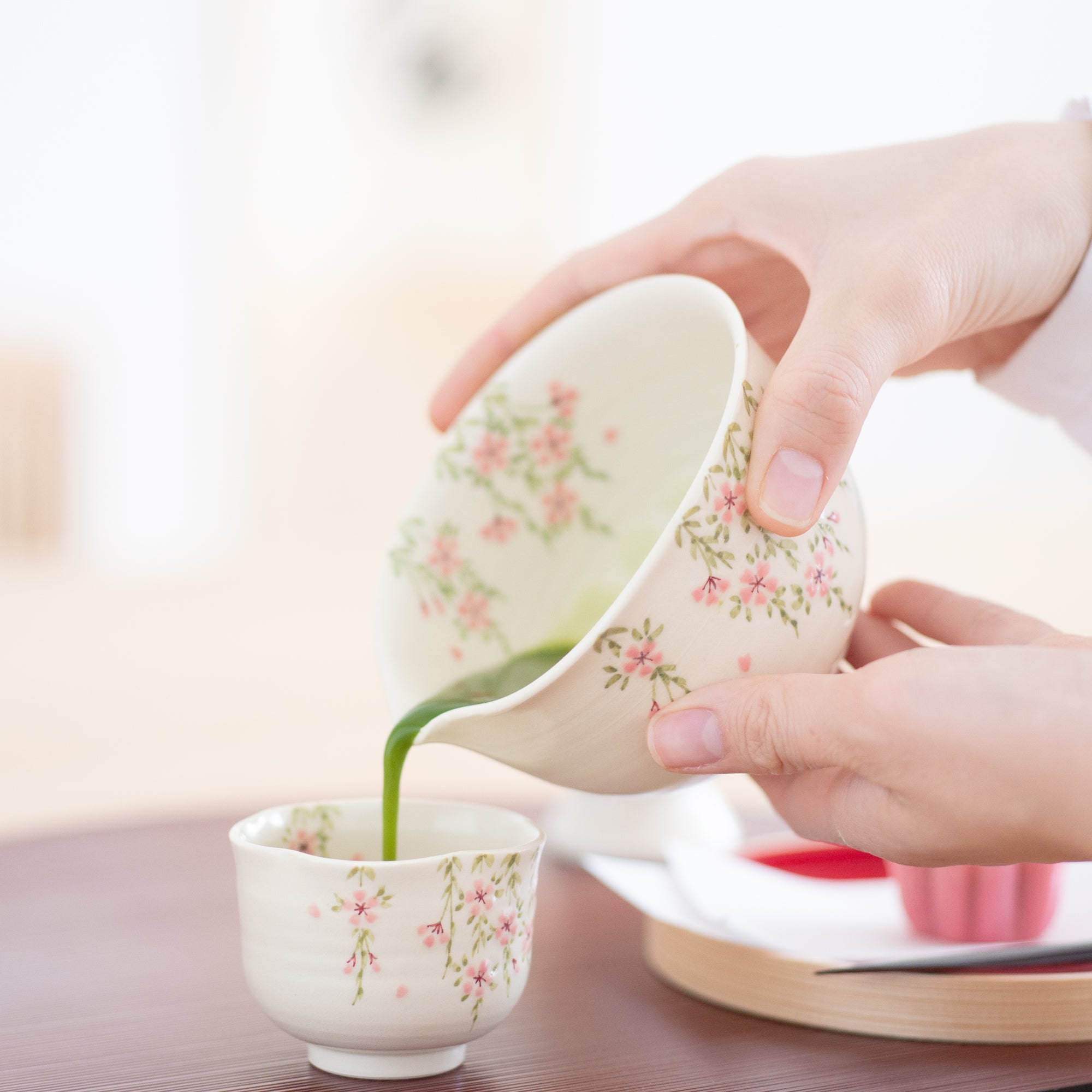
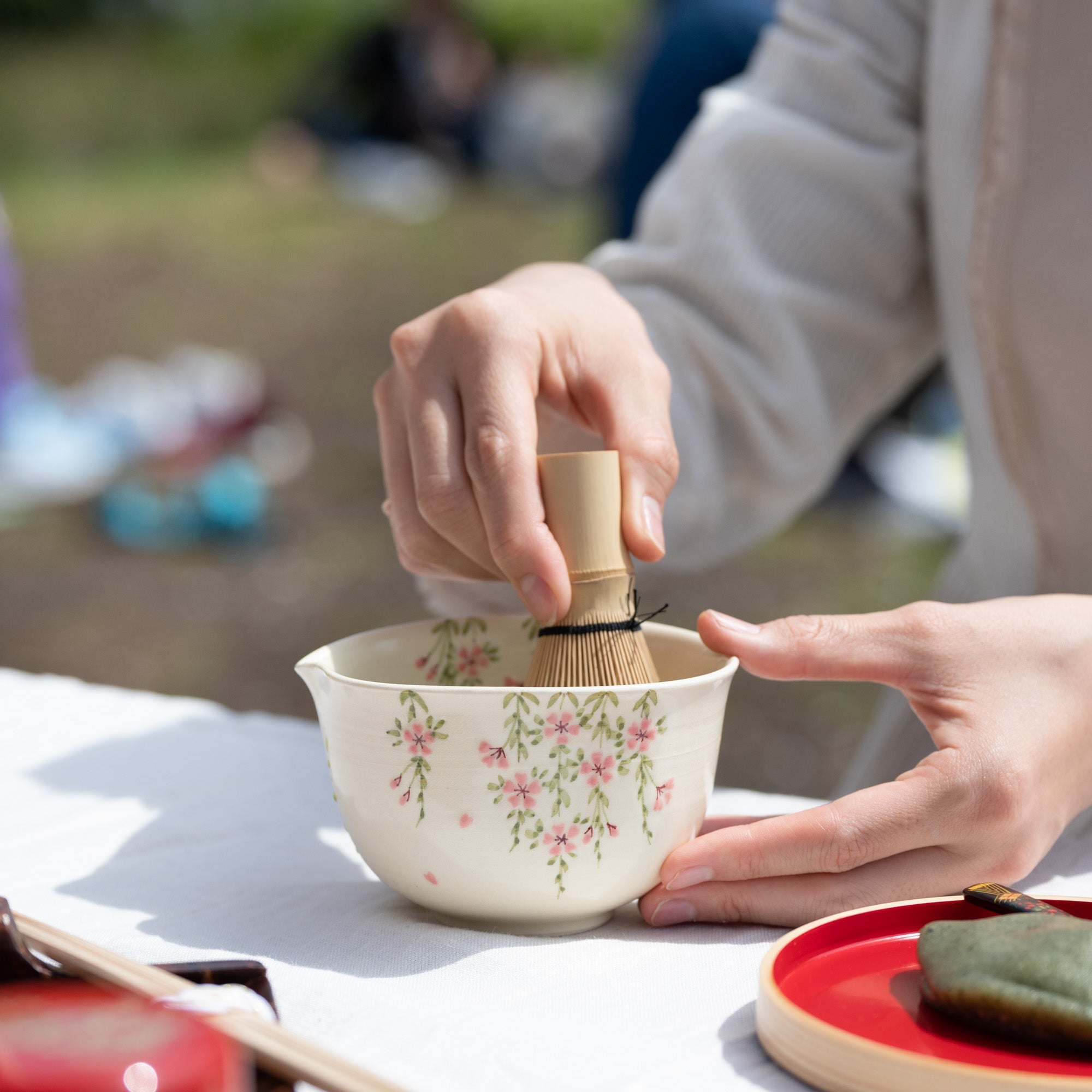
Gion Weeping Sakura Matcha-Schale
Estimated Shipping Widget will be displayed here!
Das Bild der anmutigen, hängenden Sakura-Kirschblüten von Gion, Kyoto, ist auf dieser Matcha-Schale aus dem Tosen-Ofen abgebildet. Die hängenden Kirschblüten sind eine der repräsentativen Blumen Kyotos und drücken die einzigartige Atmosphäre der Stadt aus. Das Rosa und Hellgrün der Kirschblüten schmücken wunderschön den gelblich-cremeweißen Farbton des Kiyomizu-Geschirrbodens. Die abgerundete Form der Schale vermittelt einen insgesamt sanften Eindruck und verleiht den Kirschblüten Tiefe.
Diese Teeschale fasst großzügige 350 ml (11,8 fl oz) und ist somit ideal für die Zubereitung und das Servieren von Matcha. Die Vertiefungen an den Seiten und am Ausguss erleichtern das Halten und Ausgießen und eignen sich daher auch hervorragend als Katakuchi Sake-Karaffe. Kombinieren Sie es mit Sake-Tassen aus derselben Sakura-Serie, um Ihren Tisch mit den atemberaubenden Farben des Frühlings in Kyoto zu schmücken.
EINZELHEITEN
| Quantity | 1 |
| Size | D 7.3 cm (2.9 in) x H 11.5 cm (4.5 in) |
| Capacity | 350 ml (11.8 fl oz) |
| Material | Stoneware |
| Package Type | Paper box |
| Microwave | No |
| Dishwasher | No |
Hersteller / Marke
Tosen Kiln wurde 1868 als Großhändler für Kiyomizu-Ware gegründet. 1944 eröffnete das Unternehmen ein Produktionsstudio in Mukomachi, einem Vorort von Kyoto, und begann damit die Produktion von Kiyomizu-Ware in großem Maßstab. Heute ist der Ofen in Gojo, Kyoto, in Betrieb und führt sein handwerkliches Erbe fort.
Tosen Kiln hat sich der Verfeinerung seiner Techniken und seines künstlerischen Feingefühls verschrieben und greift die traditionelle Handwerkskunst Kyotos auf, während es sie an die Moderne anpasst. Inspiriert vom Töpfermeister Nonomura Ninsei aus der Edo-Zeit, bewahrt das Unternehmen dessen präzise Drehtechniken und leuchtenden Malstil und verbindet diese mit klaren Linien und warmen Tönen, um Stücke zu schaffen, die mit der zeitgenössischen Ästhetik harmonieren.
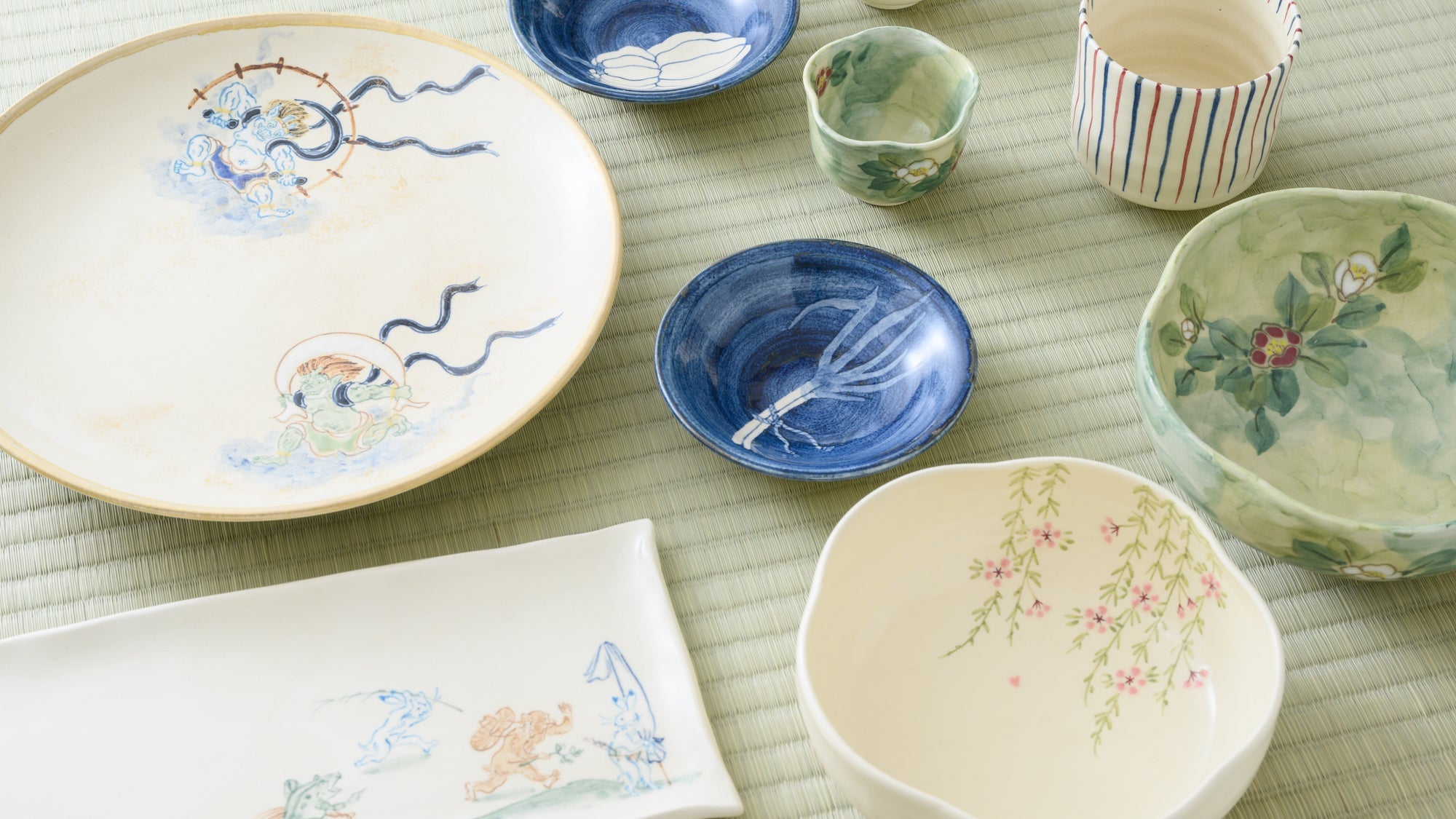
Kunsthandwerk
Kyo- und Kiyomizu-Ware, zusammen als Kyo-yaki und Kiyomizu-yaki bekannt, sind berühmte Keramikstile aus Kyoto. Bekannt für ihr lebendiges Design, ihre fein geformten Formen und die Liebe zum handwerklichen Detail, spiegeln diese Waren Kyotos unverwechselbaren Sinn für Schönheit und künstlerische Raffinesse wider.
Kyo- und Kiyomizu-Ware zeichnen sich durch eine lange gepflegte Vielfalt aus und greifen auf Techniken und Stile der Töpfertraditionen Japans zurück. So entwickelte sich eine ausdrucksstarke und typisch Kyoto-Kunstform. 1977 als traditionelles japanisches Kunsthandwerk anerkannt, werden sie bis heute wegen ihrer kulturellen Tiefe und Alltagstauglichkeit geschätzt.

Optionen auswählen





















Estimated Shipping Widget will be displayed here!
Matcha Schüsseln
Nehmen Sie sich einen Moment Zeit zum Entspannen und genießen Sie Matcha zu Hause mit einem authentischen und wunderschön zubereiteten Matcha chawan.
Entdecken Sie unsere Kollektion handgefertigter japanischer Matcha-Schalen, die alle von erfahrenen Kunsthandwerkern hergestellt wurden, und finden Sie die perfekte Schale für Ihr Tee-Erlebnis.
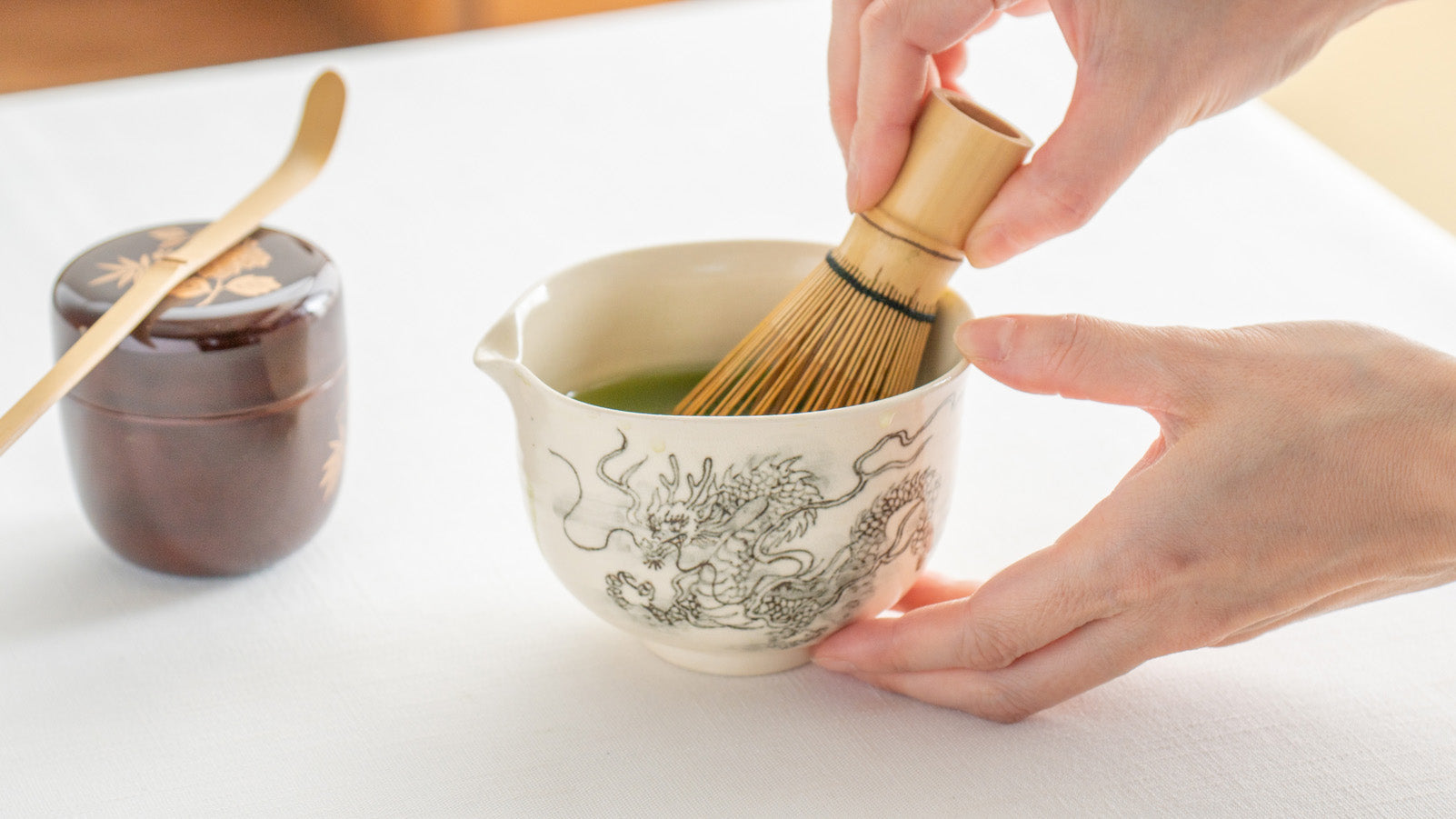
Sakura
Aus unserer Kollektion an japanischem Geschirr und Essgeschirr haben wir Artikel mit Kirschblütenmotiven zusammengestellt, die die Schönheit Japans widerspiegeln. Wir hoffen, dass Sie diese Stücke, die bei Menschen jeden Alters und aus allen Regionen beliebt sind, in Ihrem Zuhause willkommen heißen.
